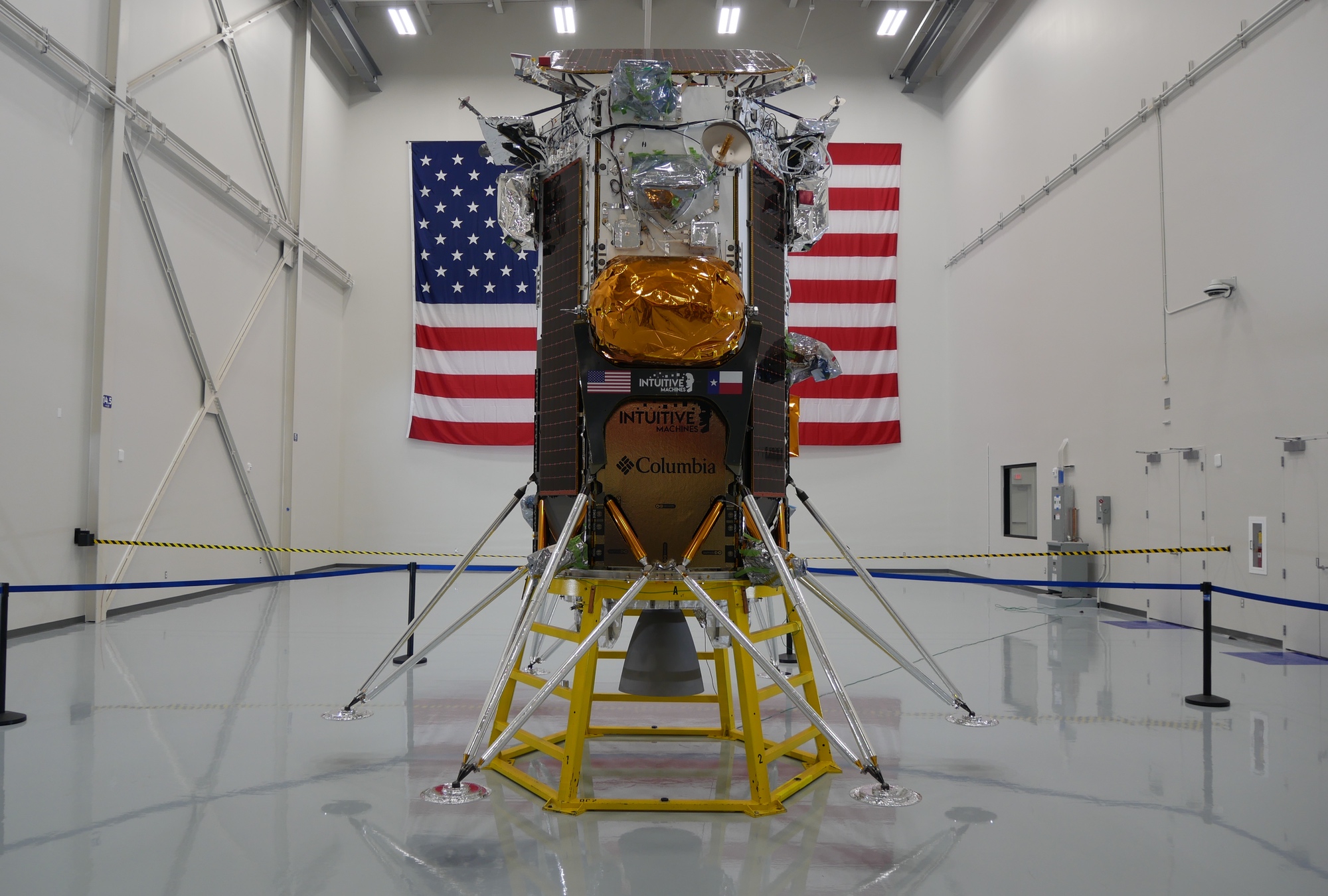WASHINGTON — Intuitive Machines said Dec. 19 it is delaying the launch of its first lunar lander mission a month to mid-February, citing changes in SpaceX’s launch manifest.
The Houston-based company had been planning a launch of its IM-1 mission in a window between Jan. 12 and 16 on a Falcon 9 from Kennedy Space Center’s Launch Complex 39A. That pad is the only one that can support the launch because it has equipment to fuel the lander with liquid oxygen and methane propellants on the pad shortly before launch.
In a statement, Intuitive Machines said that it agreed with SpaceX to delay the launch to the next available window in mid-February, saying that “unfavorable weather conditions resulted in shifts in the SpaceX launch manifest.”
That is an apparent reference to the Falcon Heavy launch of the U.S. military’s X-37B spaceplane, which had been scheduled for earlier in the month. That launch has now slipped to no earlier than Dec. 28, although that delay is primarily due to technical issues with the rocket and not weather.
Converting LC-39A from Falcon Heavy to Falcon 9 is a process that takes, on average, about three weeks, based on the time between the four Falcon Heavy launches so far this year and subsequent Falcon 9 launches on that pad. Even the shortest gap, about 17 days, would push the IM-1 launch towards the end of its window.
Intuitive Machines said its lander, which was shipped to Florida earlier in the month, has completed various pre-launch processing milestones and is ready to be integrated onto the Falcon 9 rocket.
The company had hoped to launch IM-1 in mid-November and displayed the completed lander at a media event at its Houston headquarters in early October. However, company officials warned at the time of “pad congestion” and, on Oct. 27, the company announced it was delaying the launch to a window that opened Jan. 12. Intuitive Machines did not give a detailed explanation for the delay but, in a later earnings call, strongly suggested that launch pad conflicts caused the slip.
Intuitive Machines did not provide a more specific launch period for IM-1 beyond mid-February. A launch between Jan. 12 and 16 would have set up a landing on Jan. 19 or 21, taking a relatively direct trajectory to the moon and orbiting for only a short time before attempting a landing in the vicinity of Malapert A, a crater in the lunar south polar region.
The revised plans for Intuitive Machines could mean that there are two lunar landings days apart in February. Astrobotic announced Dec. 19 that its Peregrine lander is ready for a launch as soon as Jan. 8 on the first United Launch Alliance Vulcan Centaur. That would set up a landing attempt by Peregrine on Feb. 23. Both Peregrine and IM-1 are carrying commercial payloads as well as those provided by NASA through its Commercial Lunar Payload Services (CLPS) program under awards made in 2019.
